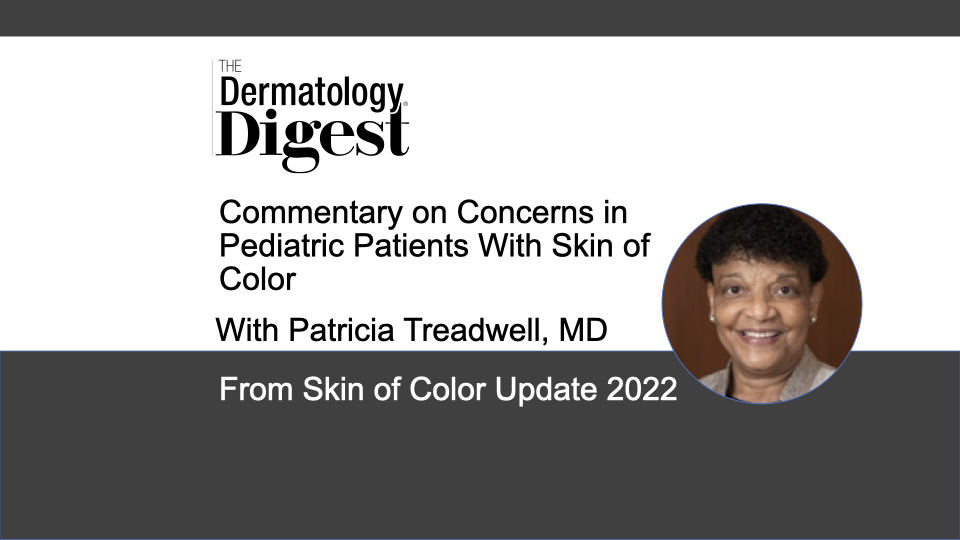Dr. Patricia Treadwell discusses special considerations in diagnosing and treating skin issues in pediatric patients with darker skin types.
Patricia Treadwell, MD, Pediatric Dermatology, Riley Children’s Health, Indiana University Health, Indianapolis, Indiana
“[There are] two points that I would make… one is the changes in the pigmentation. Particularly eczema is something where there are pigmentary changes and so the eczema can be darker, it can be lighter, and the patients can actually be more concerned about the pigmentary changes than the disease itself,” said Patricia Treadwell, MD, who presented “Concerns in Pediatric Patients With Skin of Color” at this year’s Skin of Color Update.
“That’s certainly true for acne. I think a number of dermatologists have had the experience of treating a patient with skin of color with acne. Their acne is actually better, but the patient is very concerned about the dark marks that are left. And so it’s important to go ahead and address those concerns.”
In addition to the acne treatments themselves, “I recommend a noncomedogenic moisturizer with sunscreen [and] that they put it on every day.”
According to Dr. Treadwell, it’s important for patients to understand that ultraviolet A from fluorescent lights or coming through windows can cause pigmentary changes if they don’t use sunscreen daily.
“And on occasion that’s challenging. Some patients with darker skin are not accustomed to wearing sunscreen, but I try to emphasize wearing sunscreen every day.”
A hurdle to effective treatment of eczema in darker skin types is accurately categorizing its severity, said Dr. Treadwell.
“In darker skin, the erythema is hard to recognize, and so sometimes the eczema is underestimated and isn’t treated as aggressively as it should be.”
Eczema scoring systems include erythema, but you may not recognize it in very dark skin, said Dr. Treadwell.
“…the point would be to treat it more aggressively based on how they are responding.”
Eczema in skin of color may also appear as papules rather than the more characteristic patches usually seen, said Dr. Treadwell.
“So, again, being able to recognize that [papules] might be something that’s seen.”
Another notable point for pediatric patients with skin of color is the diagnosis of pediatric neurofibromatosis type 1, said Dr. Treadwell.
“The specific criteria that are listed for neurofibromatosis [include] a cafe au lait macule, which is a description of coffee with cream. In darker skin, it’s just coffee.”
Being aware of this distinction can be the difference between an accurate and inaccurate diagnosis of this cutaneous and central nervous system disease, said Dr. Treadwell.
“Even though there’s not a treatment, there are protocols for monitoring patients with neurofibromatosis to anticipate some of the problems that might come up that may need treatment.”

